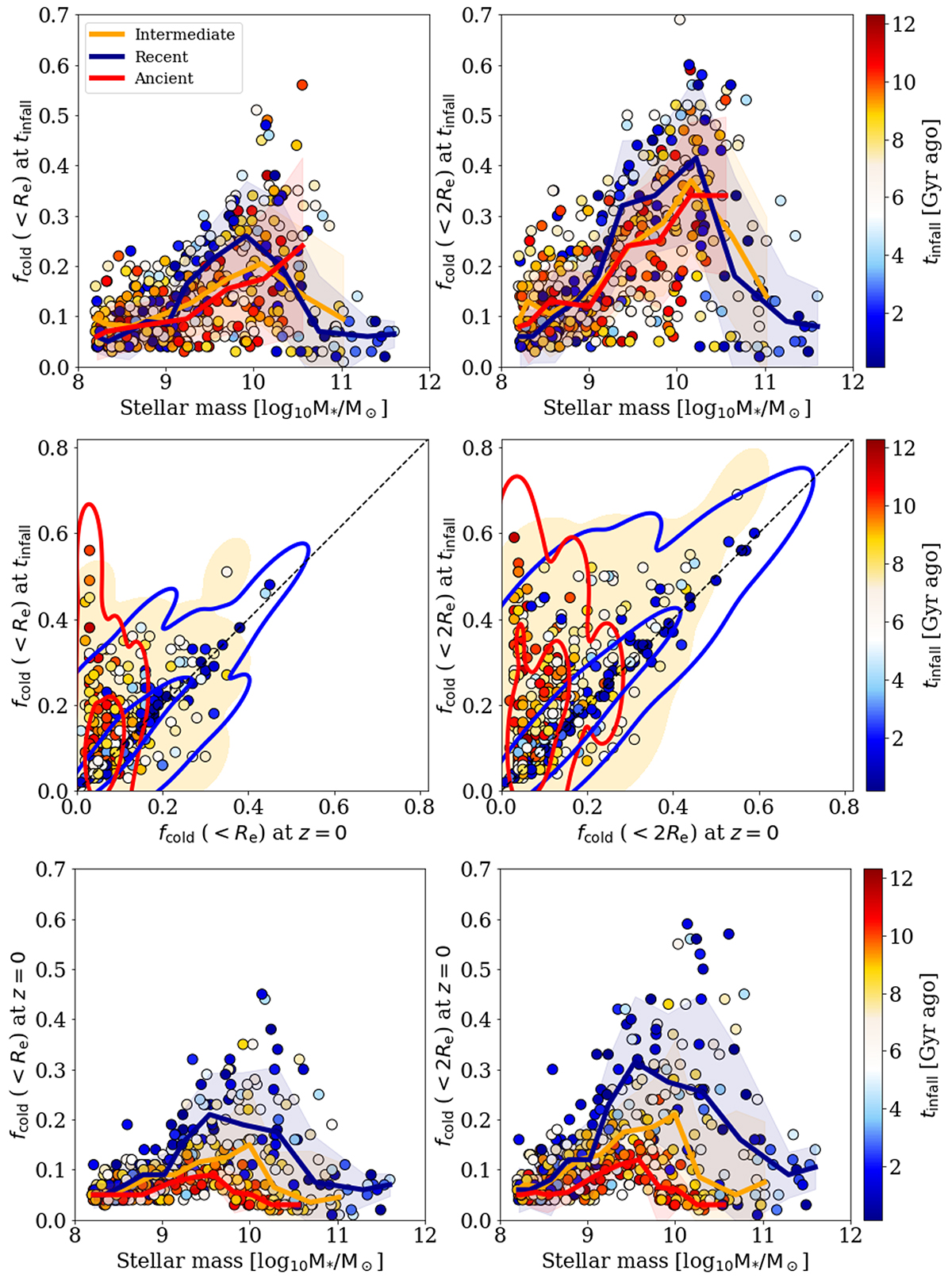Fig. 8.

Download original image
Stellar mass fraction in the dynamically cold disks in cluster galaxies according to TNG50, at infall and at the present day. In all rows, we show the mass-weighted cold-disk fraction of galaxies within 1 Re (left) and within 2 Re (right), whereby the effective radius is obtained at z = 0. In all panels, we color code the markers by the time since infall, according to the color bars. In the top and bottom rows, red, yellow, and blue curves and shaded regions denote population medians and 1-σ variations of the stellar cold-disk fraction in bins of present-day galaxy stellar mass for ancient, intermediate, and recent infallers, respectively. In the middle row, the fraction in the dynamically cold disks is compared between the infall time and the present day, with the red and blue contours representing the 1σ and 3σ density contours of the ancient and recent infallers, respectively, and with the yellow shaded region denoting the 3σ density contour of intermediate infallers. As clearly shown by the middle plots, the stellar mass fraction of cold, disky orbits at z = 0 is smaller for galaxies that fell into their z = 0 cluster longer ago, i.e., the time spent within the cluster environment correlates with a reduction in stellar disk structures.
Current usage metrics show cumulative count of Article Views (full-text article views including HTML views, PDF and ePub downloads, according to the available data) and Abstracts Views on Vision4Press platform.
Data correspond to usage on the plateform after 2015. The current usage metrics is available 48-96 hours after online publication and is updated daily on week days.
Initial download of the metrics may take a while.


